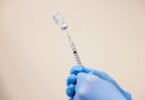The perennial campaign slogan of the late senator Paul D. Coverdell was a straightforward “Coverdell works!” And his newest memorial, the Paul D. Coverdell Center for Biomedical and Health Sciences, promises to prove worthy of the “soft-spoken workhorse” – as colleagues described him – whose beliefs in education steered his lifelong efforts in the Georgia Senate, United States Senate and International Peace Corps.
The Paul D. Coverdell Center for Biomedical and Health Sciences is the centerpiece of the University of Georgia’s interdisciplinary biomedical enterprise. This state-of-the-art facility, which will be dedicated this week, is a fitting memorial to the late U.S. Senator from Georgia, whose career was distinguished by a commitment to education and the biomedical research enterprise. The dedication begins at 2 p.m. on April 7 and includes a keynote address from former president George H. W. Bush. The ceremony will be held on the plaza of the College of Veterinary Medicine, located directly across from the Coverdell Center on D.W. Brooks Drive. It’s free and open to the public. After the former president’s speech and departure, the public will be allowed inside the building.
The 140,000 square foot Coverdell Building houses a dynamic, interactive mix of disciplines with a unifying focus on problems of biomedical importance. Laboratory research-intensive groups include the Center for Tropical and Emerging Global Diseases, the Developmental Biology Group, and the Bio-Imaging Research Center, which includes cutting edge technologies for imaging human and animal tissues. The Coverdell also includes the Health and Risk Communications Group, the administrative homes of the College of Public Health and the Biomedical Health Sciences Institute, and the College of Public Health’s Department of Health Administration, Biostatistics and Epidemiology.
Besides laboratories and administrative offices, the Coverdell includes UGA ‘s premier animal facility, which provides excellent facilities for researchers using or studying rodent, primarily mouse, and fish models of human development and disease. Also included are specialized spaces for bioimaging for studies of bacterial pathogens. The research facilities within the Coverdell Building represent a departure from traditional laboratory architecture in that they are designed as “laboratories without walls.” The building also contains attractive spaces for informal and formal gatherings of small to large groups. Together, these distinguishing architectural features encourage interactions and collaborations among diverse research teams, with the goal of fostering multidisciplinary approaches to important biomedical problems.
Additionally, the $40 million building is constructed from indigenous granite and recycled materials, and incorporates such “green,” or environmentally friendly, aspects of design as sensors that pick up on natural light levels and dim fluorescent fixtures and a water conservation system that will ensure that the facility is as energy-efficient as possible.




